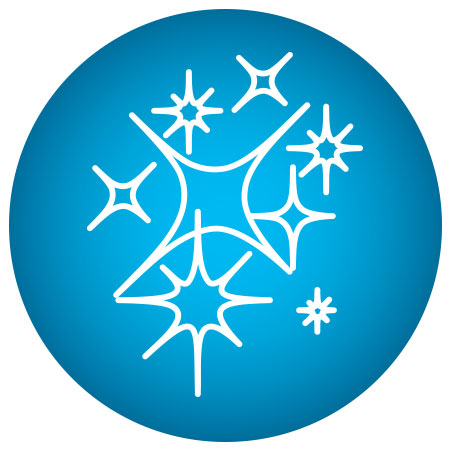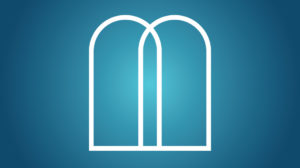Back to Normal

We must never come to terms with our estrangement from our true essence
On Friday, May 14, 2021, the governor of Minnesota lifted the mask mandate. The residents of the state were elated.
“Thank You, Hashem. Hodu l’Hashem ki tov” could be heard throughout the halls of the Bais Yaakov in Minneapolis. Students joyfully discarded their masks and removed all the signs from the wall reminding them to put one on. After sitting in class with a mask for the entire year, it was a thrill to finally be mask-free!
I overheard a conversation between two students that day:
Student A: “This isn’t normal. I can’t believe we’re allowed to be in school without a mask. It feels so strange.”
Student B: “You may have forgotten, but actually, this is normal. What’s not normal is that we had to wear a mask the entire year.”
Everything in the physical world has a parallel in the ruchniyus world….
While many governmental and medical personalities urged us to accept the “new normal” during COVID-19, we instinctively resisted. We couldn’t accept a world in which we wore masks and were socially distanced. We eagerly awaited the time when this would be over.
Perhaps the Ribbono shel Olam is reminding us to resist accepting as normal our abnormal state of galus, in which Hashem wears a mask and is distant from His beloved nation. Perhaps as we go back to normal, it’s an opportunity to think about what it would mean to go back to normal in the ruchniyus sense as well.
We ask Hashem regularly to rebuild the Beis Hamikdash and restore life as it was in previous times. “Sheyibaneh Beis Hamikdash bimeheirah v’yameinu…kimei olam uch’shanim kadmoniyos…The Beis Hamikdash should be rebuilt…as in days of old and in previous years… “Chadesh yameinu k’kedem…Renew our days as in earlier times.”
As we say these words, do we feel any sense of urgency to return to that previous state? While we pined for the day that we could remove our masks, do we also pine for the day that Hashem will remove His mask and reveal His Presence?
We’ve become so accustomed to Hashem being hidden that we view galus as normal. We need to remind ourselves that it’s not normal for Klal Yisrael not to have a Beis Hamikdash. It’s not normal to have Yamim Tovim without aliyah l’regel and the korbanos of each chag.
Our Abnormal Reality
Last year, Pesach was so different for so many of us. There were no guests at our table. Many people, myself included, were completely alone.
Imagine someone new to Yiddishkeit experiencing Pesach for the first time last year. He would think it’s the norm to ask the questions of Mah Nishtanah to himself, to read the Haggadah and eat the matzah, maror, and the seudah all alone, since this was his only Pesach experience.
We, however, know that having extended family and guests around the table, having animated discussions and children saying Mah Nishtanah to their parents — these are what comprise a “normal” Seder.
While we all recognize that last year’s Pesach was clearly a compromised situation, what we don’t necessarily recognize is that Pesach of other years is also a very compromised situation compared to Pesach during the times of the Beis Hamikdash. If someone who experienced Pesach during the Beis Hamikdash were to join us for Pesach today, he’d barely recognize our Pesach. Pesach during the Beis Hamikdash was a normal Pesach; Pesach in galus is not.
The Ribbono shel Olam tells us “V’anochi haster astir panai.” Because of the double lashon of “haster astir,” the pasuk is generally translated as “I will surely hide My face.” The Vilna Gaon explains the pasuk differently. He says that Hashem is telling us: “V’anochi haster, I will hide… astir panai, that I’m hiding.” Not only will Hashem be hidden, we won’t even be aware of the fact that He is hidden.
The implications of this are many. If we don’t recognize that Hashem is wearing a mask and is hidden behind everything that happens in the world and in our personal life, we won’t respond to our troubles by turning to Him to help us. In addition, if we’re not thinking about the fact that Hashem is hiding, then we won’t beg Him to come out of hiding, to take off His mask, and reveal Himself in an open way.
The first step toward Geulah is for us to be aware that galus and hester panim is an abnormal state for Klal Yisrael. We can then plead with Hashem to restore us to our normal life, “k’kedem,” as in earlier times.
Who We Really Are
It’s also important to be aware of what’s the true normal state for us as individuals, and implore Hashem to help us return to that state.
We often wear a mask that estranges us from our true selves and distances us from Hashem. It’s crucial that we have a clear understanding of who we really are behind that mask: We’re the neshamah who learned Torah from the malach before we were born; we’re the neshamah who heard Hashem speaking at Har Sinai and who received two crowns from the malachim when we said “Naaseh v’nishma.”
Why do we need to learn Torah in the womb if we forget it immediately after we’re born? Why did our neshamos need to be at Har Sinai if none of us have any recollection of being there? Why did the malachim bother to give us two crowns when Hashem knew they would be taken away shortly afterward following the Cheit Ha’eigel?
Though we may have no conscious memory of learning Torah in the womb and at Har Sinai, those experiences informed our essence. They created our norm, our “k’kedem.” Though Klal Yisrael would sin shortly after they said naaseh v’nishma, HaKadosh Baruch Hu wanted to make sure that His beloved people would recognize that what defined them was not their sin, but rather the crowns they received at Har Sinai.
We need to recognize that distance from Hashem isn’t our natural state. When we fall — as we all inevitably do — and when we feel distant from Hashem — as we all inevitably feel — we’re masking our true identity. We must never come to terms with our estrangement from our true essence.
We need to find a way to carve out some time from our already overcrowded schedules to inspire ourselves, perhaps by learning with a friend, listening to a shiur over the phone, reading a motivating daily message, or connecting with someone we admire.
There’s a reason teshuvah is called “return,” even for a person who never had any previous connection to Torah and mitzvos. Someone who does teshuvah is returning to his true self, to his essence. He’s returning to the state he’d been in when he learned Torah from the malach, heard Torah at Har Sinai, and received the crowns upon saying “Naaseh v’nishma.” Every Jew who does teshuvah is unmasking his true identity.
We look forward to the day when Hashem will take off His mask, and we’ll take off ours, when all of Klal Yisrael will rejoice together as we see the fulfillment of our dream, chadesh yameinu k’kedem: Renew our days as the days of old and bring us back to the greatest normal.
Rebbetzin Suri Gibber has been involved in chinuch habanos for decades, first as general studies principal in Bais Yaakov High School of Miami, and, for the past 15 years, as principal of Bais Yaakov High School of the Twin Cities. She also gives adult education classes.
(Originally featured in Family First, Issue 747)
Oops! We could not locate your form.







